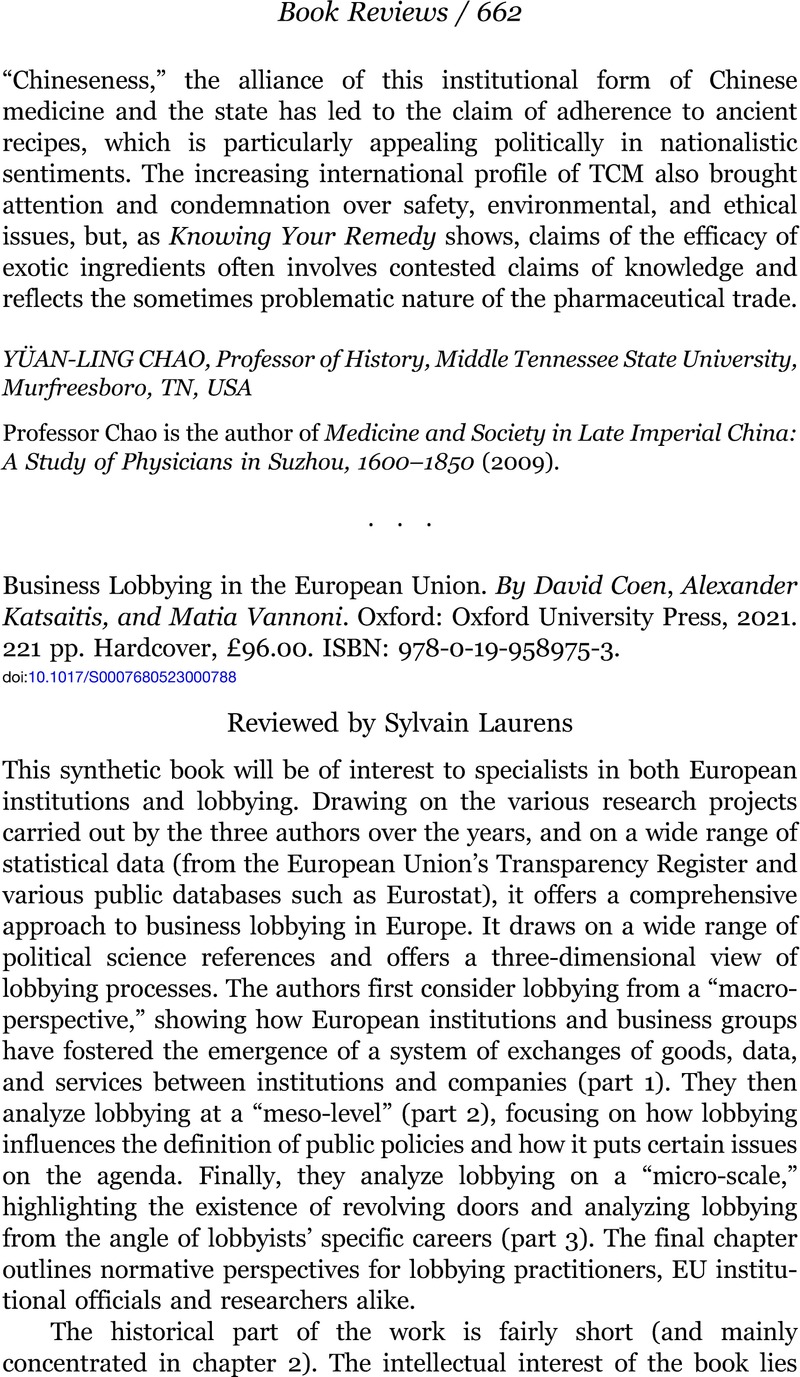No CrossRef data available.
Article contents
Business Lobbying in the European Union. By David Coen , Alexander Katsaitis , and Matia Vannoni . Oxford: Oxford University Press, 2021. 221 pp. Hardcover, £96.00. ISBN: 978-0-19-958975-3.
Review products
Business Lobbying in the European Union. By David Coen , Alexander Katsaitis , and Matia Vannoni . Oxford: Oxford University Press, 2021. 221 pp. Hardcover, £96.00. ISBN: 978-0-19-958975-3.
Published online by Cambridge University Press: 03 January 2024
Abstract
An abstract is not available for this content so a preview has been provided. Please use the Get access link above for information on how to access this content.

- Type
- Book Review
- Information
- Business History Review , Volume 97 , Issue 3: Governing Global Capitalism , Autumn 2023 , pp. 662 - 664
- Copyright
- © 2023 The President and Fellows of Harvard College


